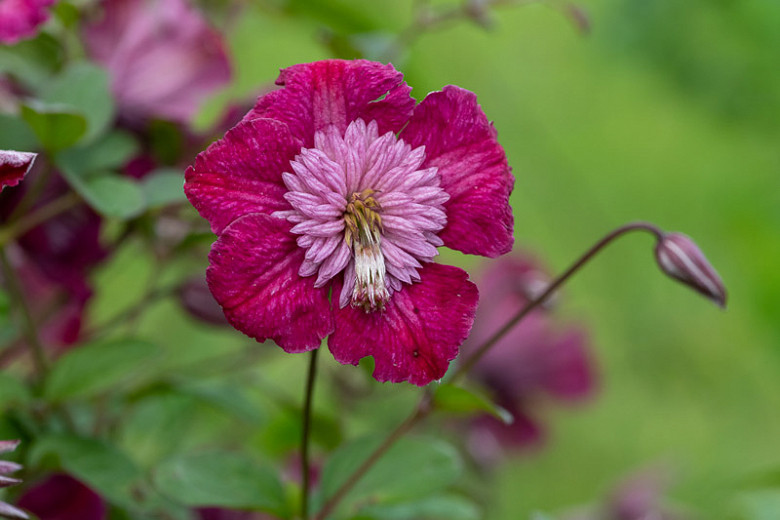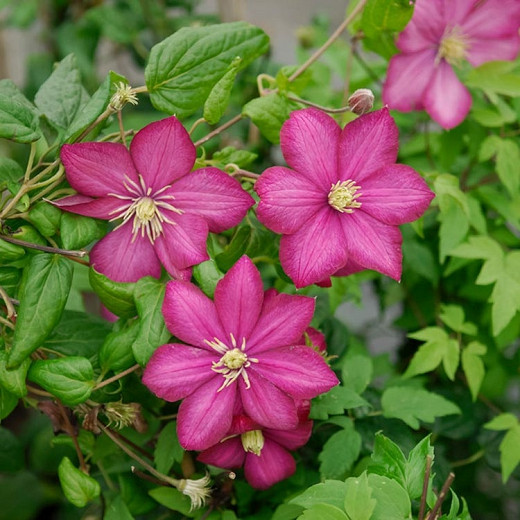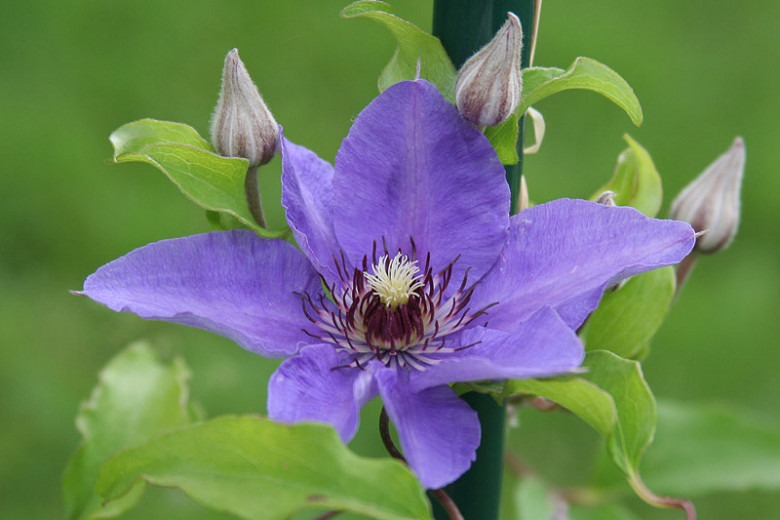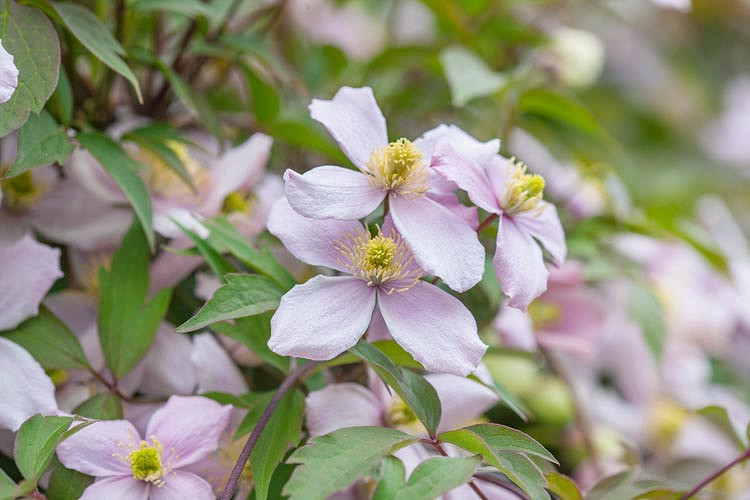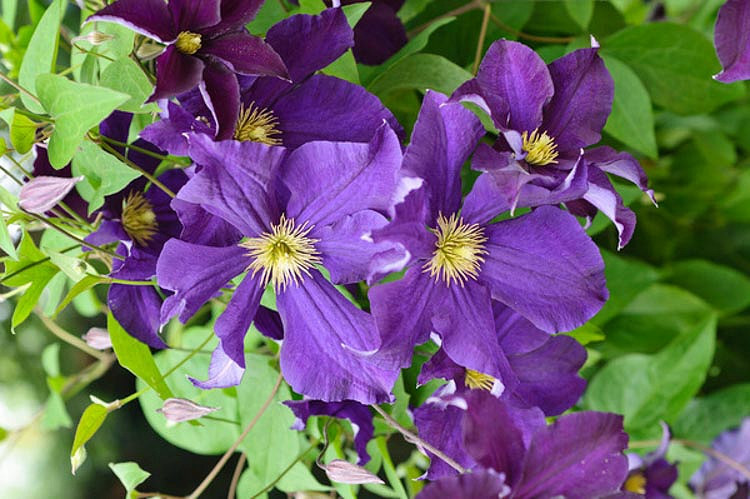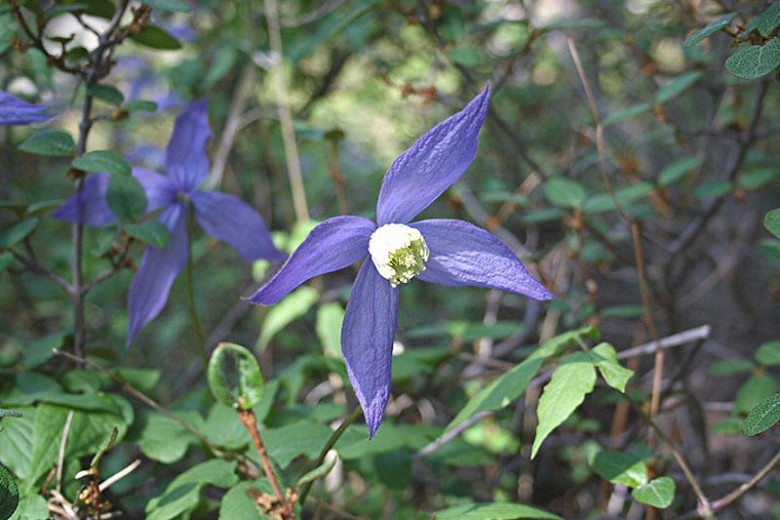Clematis Avant-Garde (Viticella Group)
Free-flowering, Clematis Avant-Garde (Viticella Group) is a ravishing deciduous vine boasting a profusion of semi-double, deep pinkish-red flowers, 2 in. across (5 cm), adorned with a central pompom of pale pink petals. Blooming from mid-summer to early fall, this vigorous clematis is ideally suited to growing over arbors, covering walls, or scrambling through shrubs or trees.
Free-flowering, Clematis Avant-Garde (Viticella Group) is a ravishing deciduous vine boasting a profusion of semi-double, deep pinkish-red flowers, 2 in. across (5 cm), adorned with a central pompom of pale pink petals. Blooming from mid-summer to early fall, this vigorous clematis is ideally suited to growing over arbors, covering walls, or scrambling through shrubs or trees. Avant-Garde clematis is a member of the small-flowered 'summer' Clematis called 'Viticella', a group including strong vines, easy to grow, amenable to training early in the season, with profuse flowering over a long period.
- Thrives in moist, well-drained soils, in full sun to part shade. Ideally, Clematis prefer having their 'heads in the sun and their feet in the shade'. Keep the roots cool and shaded by other plants or add a layer of pebbles or flat stones at the base.
- Hardy, this clematis can quickly grow up to 9-10 ft. long (270-300 cm) and 3-4 ft. wide (90-120 cm).
- This clematis belongs to the third group of Clematis – a group including Clematis which flower in late summer on growth made in that season. They should be pruned in late winter or early spring and require 'hard pruning': simply cut back the stems to a pair of strong buds about 1ft. (30 cm) above ground level before growth begins in early spring.
- As climbers, Clematis are unsurpassed in their long flowering presence, their rich diversity of flower shapes, and their wide array of colors and tolerances in terms of exposure and climate. It is no wonder they are so popular! From tree huggers to container varieties, there is a Clematis for every garden and flowers for almost every month of the year! Members of the Ranunculaceae family, they include more than 300 species and hundreds of hybrids. They create year after year a ravishing colorful show in the garden whether solely trained on walls, arbors, or trellises, or grown in association with other climbers. They are divided into 3 groups which determine how they should be pruned. Regular pruning of Clematis is important as it promotes strong growth and flowering as well as a harmonious plant. If left unpruned, Clematis can turn into a mass of tangled stems with a bare base and flowers well above eye level.
Requirements
| Hardiness | 4 – 8 |
|---|---|
| Heat Zones | 1 – 9 |
| Climate Zones | 2A, 2B, 3A, 3B, 4, 5, 6, 7, 8, 9, 10, 11, 14, 15, 16, 17, 18, 19, 20, 21, 22, 23, 24, A2, A3 |
| Plant Type | Climbers |
| Plant Family | Clematis |
| Exposure | Full Sun, Partial Sun |
| Season of Interest | Summer (Mid,Late)Fall |
| Height | 9' – 10' (270cm – 3m) |
| Spread | 3' – 4' (90cm – 120cm) |
| Spacing | 36″ – 48″ (90cm – 120cm) |
| Water Needs | Average |
| Maintenance | Low |
| Soil Type | Chalk, Clay, Loam, Sand |
| Soil pH | Alkaline, Neutral |
| Soil Drainage | Moist but Well-Drained |
| Characteristics | Showy |
| Tolerance | Deer, Rabbit |
| Attracts | Butterflies, Hummingbirds |
| Garden Uses | Arbors, Pergolas, Trellises, Beds and Borders, Ground Covers, Wall-Side Borders, Walls and Fences |
| Garden Styles | City and Courtyard, Informal and Cottage, Traditional Garden |
